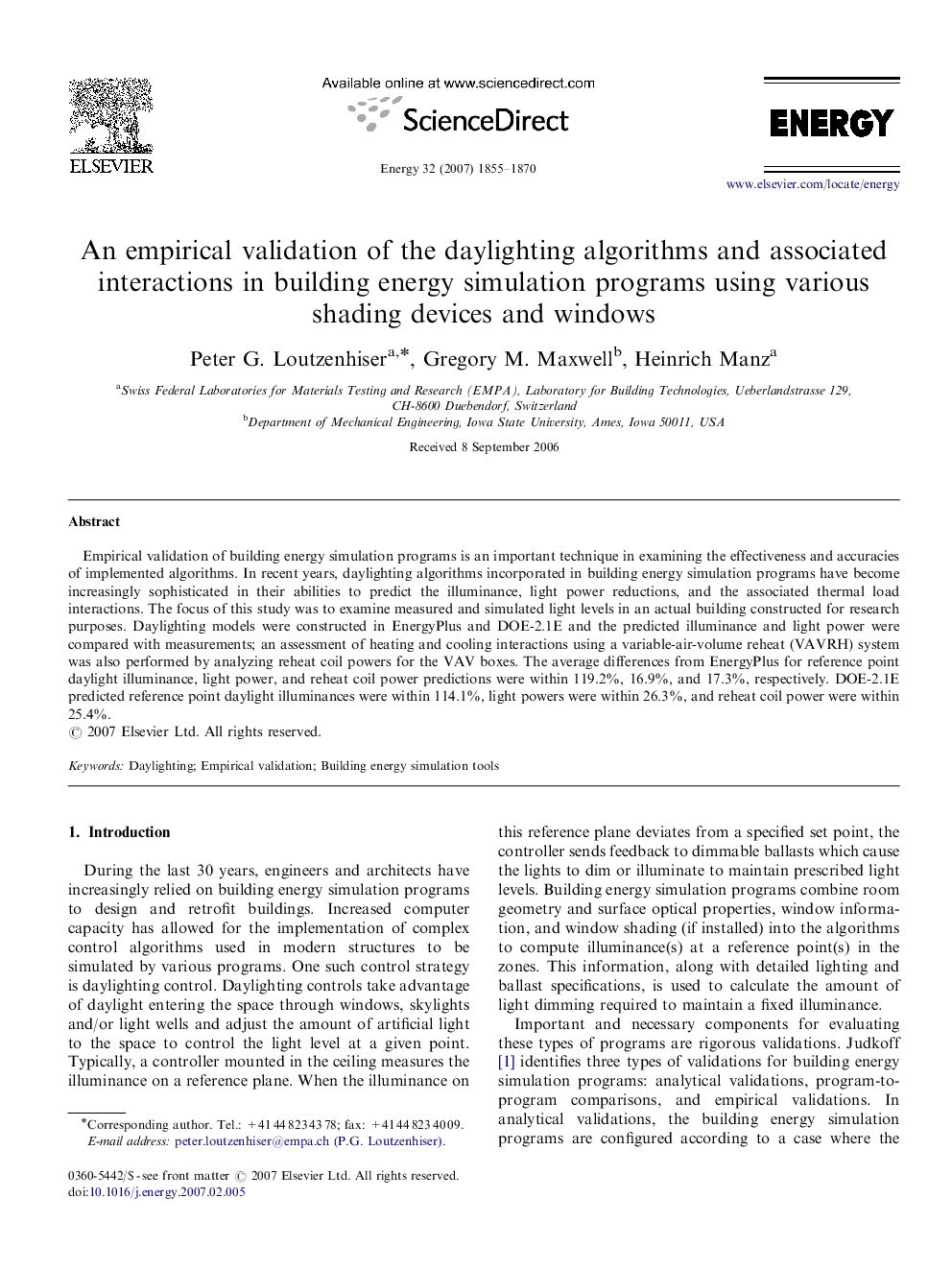| Article ID | Journal | Published Year | Pages | File Type |
|---|---|---|---|---|
| 1736126 | Energy | 2007 | 16 Pages |
Empirical validation of building energy simulation programs is an important technique in examining the effectiveness and accuracies of implemented algorithms. In recent years, daylighting algorithms incorporated in building energy simulation programs have become increasingly sophisticated in their abilities to predict the illuminance, light power reductions, and the associated thermal load interactions. The focus of this study was to examine measured and simulated light levels in an actual building constructed for research purposes. Daylighting models were constructed in EnergyPlus and DOE-2.1E and the predicted illuminance and light power were compared with measurements; an assessment of heating and cooling interactions using a variable-air-volume reheat (VAVRH) system was also performed by analyzing reheat coil powers for the VAV boxes. The average differences from EnergyPlus for reference point daylight illuminance, light power, and reheat coil power predictions were within 119.2%, 16.9%, and 17.3%, respectively. DOE-2.1E predicted reference point daylight illuminances were within 114.1%, light powers were within 26.3%, and reheat coil power were within 25.4%.
